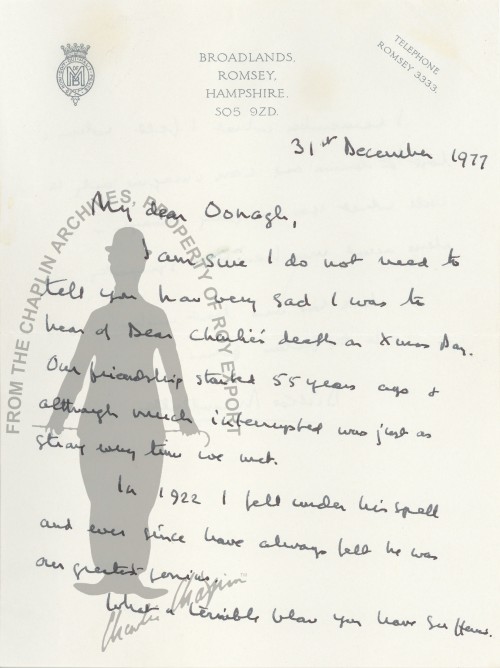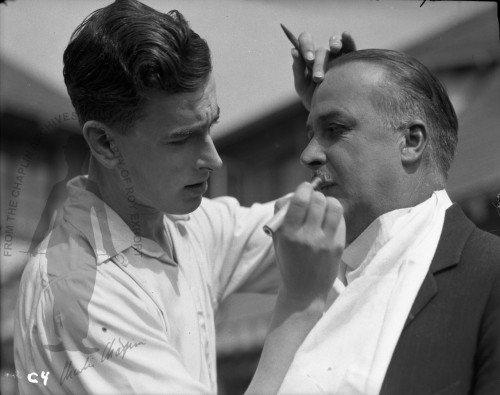Affectionately known as Dickie, Lord Mountbatten is probably best known for two things: his horrible death at the hands of the IRA in 1979 and his role as Prince Charles’s most important mentor. What’s lesser known is the mutual affection Charlie and Dickie had for each other for many years, a fact that Mountbatten related in a letter to Oona at the time of Charlie’s death:
“Our friendship started 55 years ago and although much interrupted, was just as strong every time we met. In 1922, I fell under his spell and ever since have always felt he was our greatest genius.”
Of course, until she died in 1960, there was not a Dickie without his adored wife Edwina. Their extensive three-month honeymoon first brought them to Hollywood after their marriage July 18, 1922. They had visited the royal courts throughout Europe and began to make their way across the American continent, stopping for a Yankees baseball game, a day at Coney Island and every proper honeymooner’s Niagara Falls before moving further west. The couple were supposed to stay at Pickfair with Fairbanks and Pickford, but by the time they arrived, the Fairbankses were in New York for a film premiere. The Mountbattens were persuaded to stay at Pickfair anyway and wanted for nothing. The Mary Pickford Foundation notes that Charlie was assigned to be their host during this time, which, of course, led to the famous and infamous little film Nice and Friendly Chaplin put together during the couple’s visit.
Nice and Friendly, according to David Robinson, utilized anyone available. Besides the young couple who played the distressed damsel and her lover, the cast included Robert Thompson, a local businessman, as the villain, Jackie Coogan as Mountbatten’s valet, Thorogood, Chaplin himself as both villain and Little Tramp-esque savior and two other couples, Mr. and Mrs. Neilson and Mr. and Mrs. Pell, each in small parts.
In a telegram to the couple Charlie sent after the Mountbattens’ departure, he related that “it was a gorgeous time while you were here and someday we may repeat it” and that he was “working arduously to complete [the film],” and send it to them. Lord Mountbatten was still emoting about the film in a letter to Charlie in 1965: “ As I told you the other night, of the many hundreds of wonderful wedding presents we received, this one on our honeymoon was the most dramatic and historic and the one of which Edwina and I have always been the most proud.” The Chaplins would see it once more at Mountbatten’s Broadlands estate early the next year, with his daughter Patricia acting as hostess in her mother’s place.
The Mountbattens came to be controversial figures due to their open marriage and sexual preferences, but in assessing them simply from their honeymoon hijinks and a little film called Nice and Friendly, they could easily represent all that was joyful about the 1920s and about the future of the British monarchy. Mountbatten biographer Andrew Lownie provides Dickie’s initial reaction to Charlie in a letter to his mother: “[He is] the most loveable, shy and pathetic little man and yet so full of humor that he can keep one amused by the hour.” As Keats once wrote, “Beauty is truth, truth beauty. –that is all/Ye know on earth, and all ye need to know.”
Article by Lisa Haven






